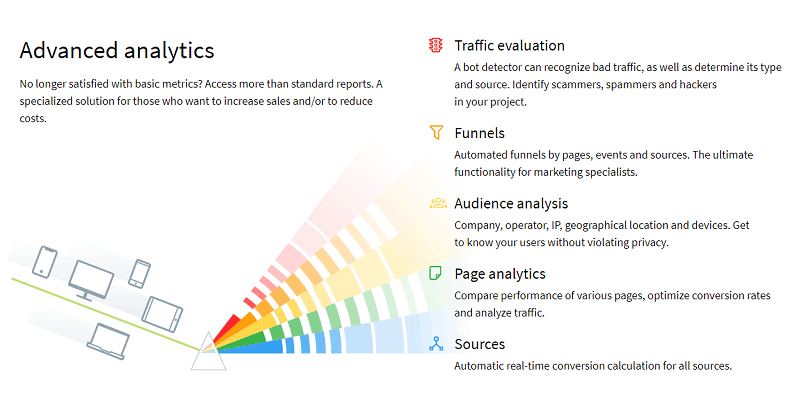If you’re running marketing campaigns or managing a business, chances are you’ve come across the terms ROI (Return on Investment) and ROAS (Return on Ad Spend). At first glance, they might seem interchangeable, but they serve very different purposes in measuring performance. Understanding the distinction between ROI and ROAS can be game-changing when it comes to strategizing and decision-making.
This blog dives deep into these two key metrics—what they mean, how they’re calculated, and most importantly, when and why you should choose one over the other.
Table of Contents
What is ROI?
ROI, or Return on Investment, is a broad metric that demonstrates the profitability of an investment relative to its cost. It’s a universal metric used across industries and can be applied to virtually any business operation—not just marketing. ROI allows you to assess whether a specific investment (money, time, or resources) is producing meaningful returns for your business.
ROI Formula
You can calculate ROI using this simple formula:
ROI = (Net Profit / Total Investment) x 100
For example, if you invested $10,000 in a new product line and it generated $15,000 in net revenue, the ROI would be calculated like this:
ROI = ($15,000 – $10,000) / $10,000 x 100 = 50%
A 50% ROI means your net profit is half of what you initially invested, a healthy indicator depending on your business goals.
Key Benefits of Using ROI
- Broad Application: ROI applies to overall business performance, not just ads or marketing.
- Long-term Focus: It helps businesses understand the bigger picture of profitability.
- Comparison Across Channels: ROI allows you to compare one investment (e.g., hiring a new team) against another (e.g., running an ad campaign).
Best Use Cases for ROI
ROI is an essential tool for assessing big-picture business decisions, product viability, operational efficiency, and even long-term marketing efforts.

What is ROAS?
ROAS, or Return on Ad Spend, is a marketing-specific metric used to measure the revenue generated for every dollar spent on advertising. It focuses solely on the effectiveness of advertising campaigns, making it more granular than ROI.
ROAS Formula
Here’s the standard formula for calculating ROAS:
ROAS = (Revenue from Ads / Cost of Ads)
For example, if you spent $5,000 on a Facebook ad campaign that brought in $20,000 in sales, the ROAS would look like this:
ROAS = $20,000 / $5,000 = 4 or 400%
This result indicates that for every $1 spent on ads, you earned $4 in revenue—a strong indicator of a successful campaign.
Key Benefits of Using ROAS
- Marketing Performance Insights: ROAS focuses on ad-specific results, helping determine the profitability of campaigns.
- Real-Time Adjustments: It allows marketers to tweak strategies mid-campaign based on performance data.
- Budget Allocation: By identifying which platforms or ads yield the highest returns, marketers can allocate budgets more effectively.
Best Use Cases for ROAS
ROAS is best suited for evaluating individual campaign performance, comparing advertising channels, and optimizing ad spend in real-time.
ROI vs. ROAS: Key Differences
Now that we’ve defined ROI and ROAS, here’s a quick comparison to make their differences crystal clear:
|
Metric |
ROI |
ROAS |
|---|---|---|
|
Definition |
Measures overall profitability of an investment |
Measures revenue generated per ad dollar spent |
|
Scope |
Broad (business-wide assessment) |
Narrow (individual ad campaigns) |
|
Formula |
(Net Profit / Total Investment) x 100 |
Revenue from Ads / Cost of Ads |
|
Focus |
Profitability (net gains) |
Efficiency (revenue generation) |
|
Timeframe |
Long-term |
Short-term |
|
Purpose |
Strategic decision-making |
Tactical campaign adjustments |
When Should You Focus on ROI?
ROI is the metric to turn to when you need a holistic view of profitability. Use it when assessing the overall success of your business operations, such as production costs, hiring decisions, or overall marketing spend (not limited to ad campaigns).
For example, imagine you’re deciding between launching a new product or investing in revamped branding. ROI can provide insight into which decision will achieve greater long-term impact.
When Should You Focus on ROAS?
ROAS shines in situations where you’re managing specific, short-term ads and campaigns. For instance, if you’re running Google Ads and Facebook Ads simultaneously, ROAS will reveal which platform yields higher returns, helping you optimize budget allocations.
It also helps marketers evaluate ongoing efforts. If one campaign underperforms with a ROAS below your target, you’ll be able to make adjustments quickly to ensure maximum returns.
Balancing ROI and ROAS
Though ROI and ROAS are different metrics, they’re interconnected and complementary. Both work together to provide a clearer understanding of your business’s financial health and marketing efficiency.
Example
Say you spend $10,000 on an influencer-led ad campaign, which brings in $30,000 in revenue. Your ROAS is 3x or 300%, an impressive performance. However, when you calculate ROI and factor in other costs (e.g., influencer fees, product shipping, labor), you realize the net profit is only $5,000, leading to an ROI of 50%.
This example shows that while ROAS gives you a snapshot of ad effectiveness, ROI tells the full profitability story.
Frequently Asked Questions (FAQ)
1. Can ROAS be negative?
Not technically. ROAS measures revenue vs. ad costs, so it will show as a small value (e.g., 0.2x or 20%) if your return is below your ad spend. However, this indicates your campaign is losing money and needs adjustment.
2. What’s a Good ROAS for Most Campaigns?
A “good” ROAS depends on your industry. Most businesses aim for a ROAS of 3x to 5x. For example, e-commerce brands often target at least 4x because their margins can be tight due to higher product costs.
3. Can You Use Only ROI to Measure Marketing?
While ROI provides a broader picture, it lacks the specificity of ROAS, which is essential for refining individual campaigns. Using both metrics ensures better decision-making.
4. Should ROI and ROAS Be Calculated for All Campaigns?
Yes! Both metrics serve different purposes but paint an essential picture together. ROI can validate your overall marketing investment, while ROAS will help you adjust your strategy for better performance.
Takeaway
Both ROI and ROAS are invaluable tools for understanding your business’s financial performance and marketing effectiveness. When applied strategically, these metrics empower marketers and finance teams to determine what’s working and where to allocate resources.













